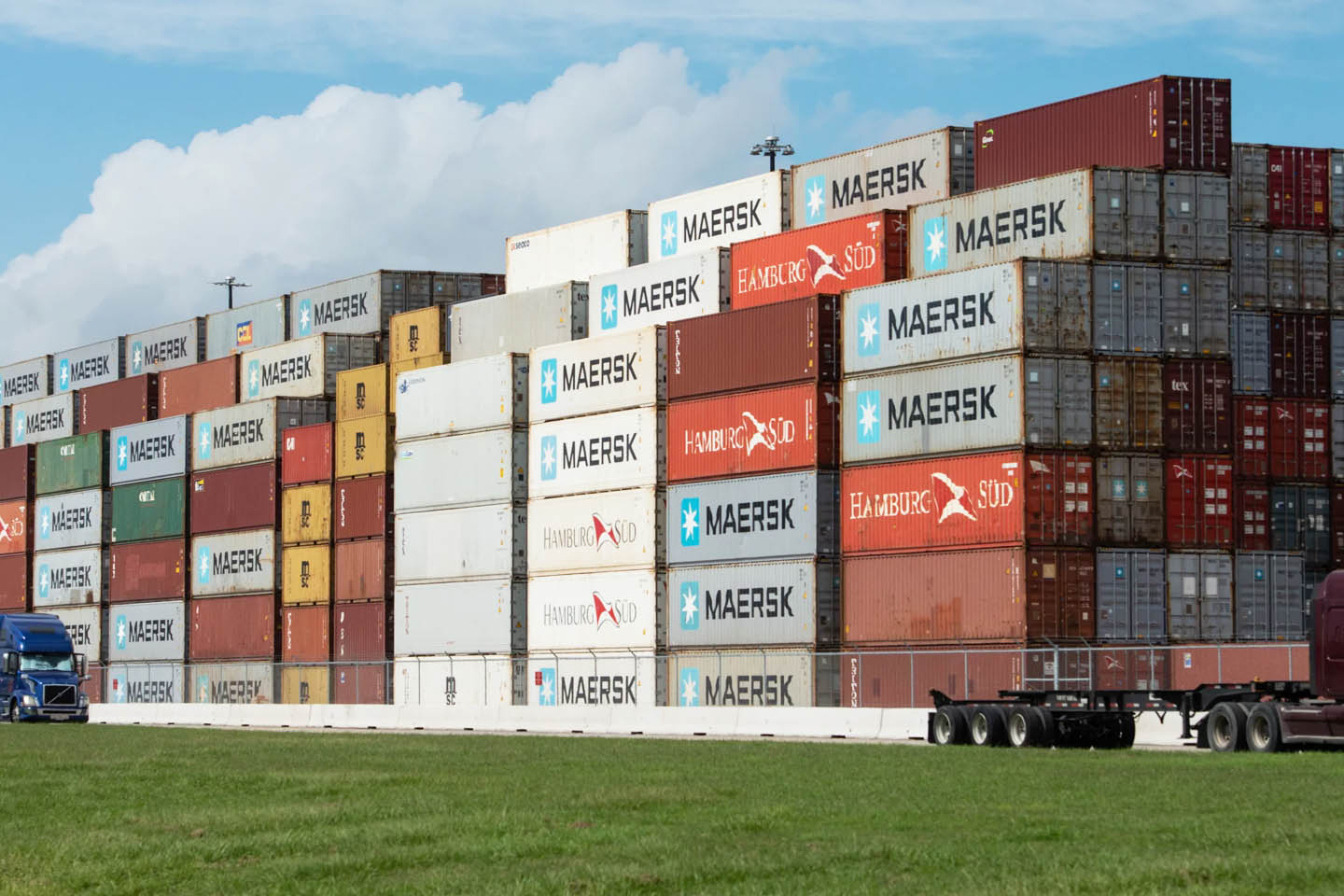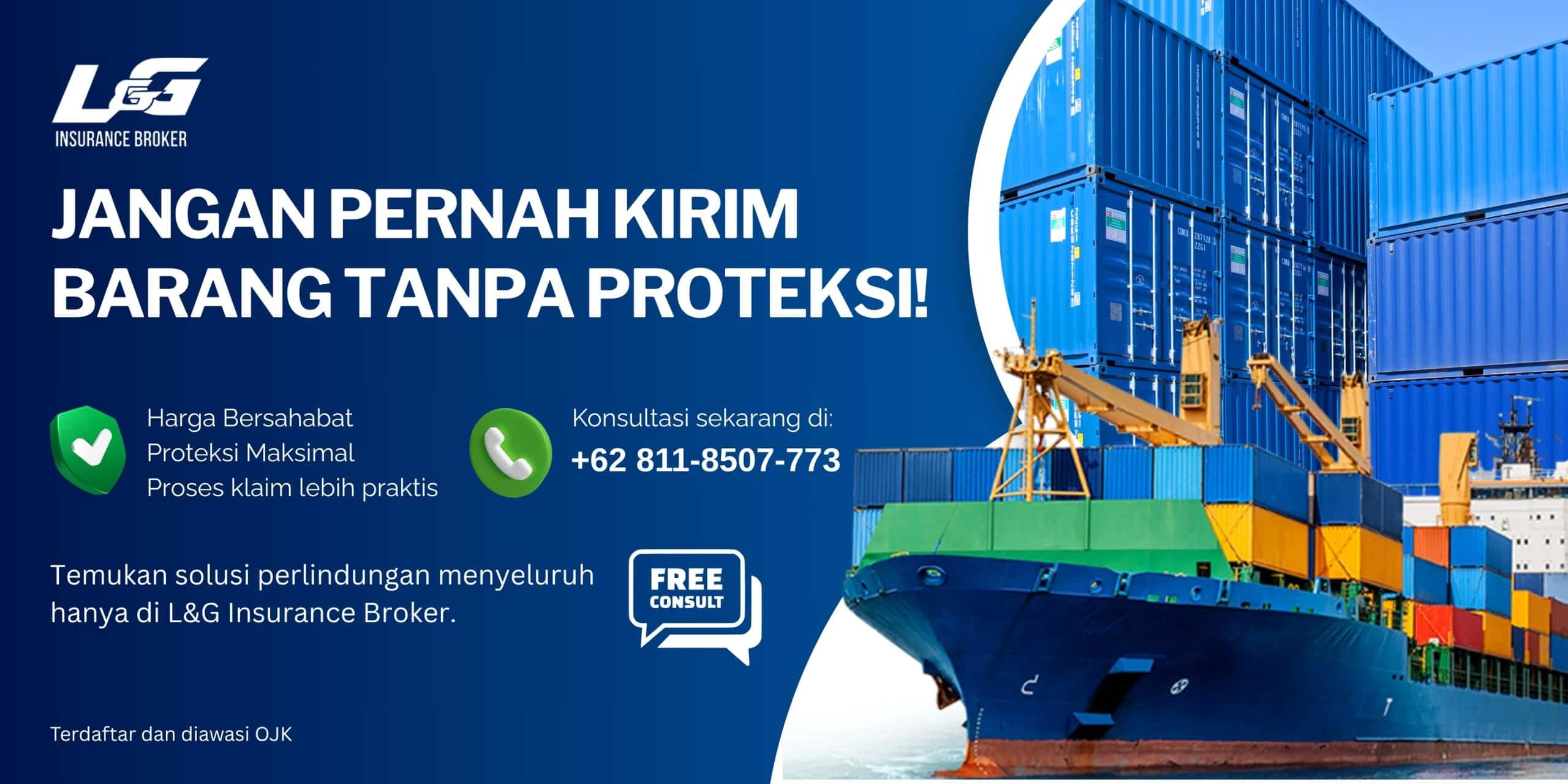Dear Risk Managers and Risk Takers,
I hope your business is thriving! Welcome back to our blog, where we delve into the critical topics of risk management and insurance. Today, we’re spotlighting the intricate world of transporting consumer electronics. Given their high value and complexities, understanding the risks and securing the right insurance coverage is paramount. If you find this article insightful, please share it with your colleagues and friends. Let’s ensure everyone is well-informed and protected!
Consumer electronics have become integral to modern life, shaping how we communicate, work, and entertain ourselves. From smartphones and laptops to smart home devices and wearable technology, these gadgets enhance productivity, provide seamless connectivity, and offer endless entertainment options. As technological advancements evolve, consumer electronics drive innovation and convenience, becoming indispensable tools in our daily routines.
their significance extends beyond individual use, as they also play a crucial role in various industries, supporting business operations, healthcare, education, and more. Ensuring these high-value items’ safe and efficient shipment is essential to meet the growing demand and sustain the global supply chain.
OVERVIEW OF THE GLOBAL AND INDONESIAN MARKETS
Global Market
The global market for consumer electronics is vast and continuously expanding, driven by rapid technological advancements, increasing consumer demand, and the proliferation of smart devices. Key segments in this market include smartphones, laptops, tablets, wearable technology, smart home devices, and entertainment systems. The rise of the Internet of Things (IoT) has further accelerated growth, with interconnected devices becoming more prevalent in households and businesses alike.
Major players in the global consumer electronics market, such as Apple, Samsung, Sony, and Huawei, consistently innovate to capture market share and meet evolving consumer preferences. The market is characterized by intense competition, frequent product launches, and significant investment in research and development.
E-commerce has also revolutionized the way consumer electronics are purchased, with online platforms offering a wide range of products and convenient delivery options. This shift has increased the importance of reliable and efficient shipping and logistics to ensure timely delivery and maintain customer satisfaction.
Indonesian Market
Indonesia represents one of the most dynamic and rapidly growing consumer electronics markets in Southeast Asia. With a large and youthful population, increasing disposable incomes, and rising internet penetration, the demand for consumer electronics in Indonesia is on the rise. Smartphones and mobile devices dominate the market, reflecting the country’s strong mobile-first approach to internet access.
The Indonesian government’s initiatives to boost digital infrastructure and promote technological adoption further support market growth. Local and international brands compete to cater to the diverse preferences of Indonesian consumers, who are becoming more tech-savvy and demanding in terms of product quality and functionality.
E-commerce is particularly influential in Indonesia, with platforms like Tokopedia, Shopee, and Lazada leading the charge in consumer electronics sales. The convenience of online shopping, combined with promotional events like Singles’ Day and Harbolnas (National Online Shopping Day), drives significant sales volumes.
However, the logistics of delivering consumer electronics across Indonesia’s vast and archipelagic geography pose unique challenges. Efficient supply chain management and robust risk mitigation strategies are crucial to handle the complexities of transportation and ensure that products reach consumers in optimal condition.
THE COMPLEXITIES AND RISK INVOLVED SHIPPING HIGH-VALUE ITEMS
Shipping and delivering consumer electronics involve navigating a complex landscape fraught with numerous risks. These high-value items, such as smartphones, laptops, and smart home devices, require meticulous handling and sophisticated logistics to ensure they reach their destinations safely and on time.
The complexity begins with the sheer volume of global shipments. Consumer electronics are often manufactured in one region and shipped worldwide, necessitating coordination across multiple transportation modes, including air, sea, and land. Each mode presents its own set of challenges. Air transport, while fast, can be costly and subject to strict regulations. Sea transport, though economical for bulk shipments, involves lengthy transit times and potential exposure to harsh environmental conditions. Land transport, encompassing trucks and rail, must navigate varying infrastructure quality and traffic conditions.
One primary risk is physical damage during transit. Electronic devices are susceptible to impact, vibration, and environmental factors like humidity and temperature fluctuations. Even minor damage can render these products unusable or significantly reduce their lifespan. Theft and pilferage pose another significant risk, given the high resale value of consumer electronics. Ensuring security throughout the supply chain is paramount to prevent financial losses and maintain consumer trust.
Operational risks, including delays and misrouting, can disrupt supply chains, leading to inventory shortages and lost sales opportunities. External risks such as natural disasters, accidents, and geopolitical instability can further complicate logistics and increase the likelihood of shipment disruptions.
Environmental hazards also pose a threat, particularly when shipping via sea. Rough seas, storms, and high humidity levels can damage electronics or compromise their packaging. Regulatory liabilities must also be managed, as different countries have varying import/export regulations and compliance requirements for electronic goods.
To mitigate these risks, robust risk management strategies and comprehensive insurance coverage are essential. Proper packaging, secure handling, and advanced tracking systems help minimize damage and loss. Insurance provides a financial safety net, covering potential losses and liabilities, ensuring that businesses can recover swiftly from any adverse events during the shipment process.
RISKS ASSOCIATED WITH SHIPPING CONSUMER ELECTRONICS
Shipping consumer electronics, such as smartphones, laptops, and smart home devices, involves various risks that can lead to financial losses, customer dissatisfaction, and supply chain disruptions. Understanding these risks is essential for implementing effective risk management strategies and ensuring the safe delivery of high-value items.
- Physical Damage
One of the most prevalent risks is physical damage during transit. Consumer electronics are sensitive to impacts, vibrations, and environmental conditions. Improper handling, insufficient packaging, or accidents during transportation can lead to scratches, dents, or internal damage, rendering the products unusable or reducing their lifespan.
- Theft and Pilferage
Given their high value and desirability, consumer electronics are prime targets for theft and pilferage. Unauthorized access to shipments, whether in warehouses, during transit, or at delivery points, can result in significant financial losses. Ensuring secure packaging, tracking, and stringent security measures is crucial to prevent theft.
- Operational Risks
Operational risks include delays, misrouting, and logistical errors that can disrupt the supply chain. Delays may arise from customs clearance issues, transportation strikes, or logistical bottlenecks, leading to missed delivery deadlines and inventory shortages. Misrouting can result in shipments being sent to incorrect destinations, further complicating delivery schedules.
- Environmental Risks
Environmental risks pose a significant threat, particularly when shipping by sea or air. Consumer electronics are vulnerable to temperature fluctuations, humidity, and exposure to saltwater. Adverse weather conditions, such as storms or extreme temperatures, can damage products or compromise their packaging, leading to spoilage or functional issues.
- Accidents and Natural Disasters
Accidents, including collisions, spills, and other transport-related mishaps, can cause severe damage to shipments. Natural disasters, such as earthquakes, floods, and hurricanes, can disrupt transportation networks, delay deliveries, and damage goods in transit.
Mitigation Strategies
To mitigate these risks, businesses should adopt comprehensive risk management strategies, including:
- Robust Packaging: Use high-quality, shock-absorbing packaging materials to protect electronics from physical damage.
- Advanced Tracking Systems: Implement GPS tracking and real-time monitoring to enhance visibility and security of shipments.
- Insurance Coverage: Secure comprehensive insurance policies, such as cargo insurance and liability insurance, to cover potential losses and liabilities.
- Compliance Management: Stay updated with international trade regulations and ensure adherence to customs requirements.
- Supply Chain Diversification: Diversify suppliers and transportation providers to reduce dependency on a single source and mitigate supply chain disruptions.
- Cybersecurity Measures: Implement strong cybersecurity protocols to protect shipment data and logistics systems from cyber threats.
By understanding and addressing these risks, businesses can ensure the safe and efficient transportation of consumer electronics, safeguarding their investments and maintaining customer satisfaction.
TYPES OF INSURANCE COVERAGE FOR CONSUMER ELECTRONICS SHIPMEN
Shipping consumer electronics involves numerous risks, from physical damage and theft to operational disruptions and regulatory challenges. To mitigate these risks, businesses must secure comprehensive insurance coverage tailored to the specific needs of transporting high-value electronics. Here are the main types of insurance coverage for consumer electronics shipment:
- Cargo Insurance
Cargo insurance protects against loss or damage to goods during transit, whether by land, sea, or air. This coverage is essential for safeguarding consumer electronics against physical damage, theft, and other perils.
Key Features:
- All-risk policies cover a wide range of potential damages and losses.
- Named perils policies that cover specific risks explicitly listed in the policy.
- Coverage for incidents such as fire, collision, and natural disasters.
- Marine Insurance
Marine insurance is crucial for electronics transported by sea. It covers risks specific to maritime transport, including vessel accidents, cargo spills, and piracy. This type of insurance is divided into two main categories: Hull insurance for the ship and Cargo insurance for the goods.
Key Features:
- Protection against perils of the sea such as storms, grounding, and sinking.
- Coverage for jettison (intentionally throwing overboard cargo to save the vessel).
- General average, where losses are shared among all stakeholders if part of the cargo is sacrificed for the common good.
- Liability Insurance
Liability insurance protects businesses against claims arising from damage or loss of third-party property during transportation. This is particularly important for logistics providers and carriers handling consumer electronics.
Key Features:
- Coverage for legal liabilities if goods are damaged or lost due to negligence.
- Protection against claims made by customers or other third parties affected by the shipment.
- Warehouse Insurance
For consumer electronics stored in warehouses during transit, warehouse insurance protects against risks such as fire, theft, and natural disasters. This insurance ensures that goods are covered while waiting for the next stage of their journey.
Key Features:
- Protection against risks while goods are stored in warehouses.
- Coverage for inventory loss due to theft, fire, or other covered perils.
THE IMPORTANCE OF USING AN INSURANCE BROKER
Shipping consumer electronics, which are high-value and high-demand items, involves navigating a complex landscape of risks and challenges. To effectively manage these risks and secure the best possible insurance coverage, businesses should consider utilizing the services of a professional insurance broker. Here’s why:
- Expert Knowledge and Industry Insight
Insurance brokers possess specialized knowledge and experience in the shipping and logistics industry. They understand the unique risks associated with transporting consumer electronics, including the potential for physical damage, theft, and operational disruptions. This expertise allows them to recommend the most appropriate and comprehensive insurance solutions tailored to the specific needs of your business.
- Customized Insurance Solutions
Every shipment of consumer electronics is different, with varying values, routes, and modes of transportation. Insurance brokers work closely with you to understand these variables and craft customized insurance policies that address your specific requirements. They ensure that all potential risks are covered, providing a level of protection that generic policies may not offer.
- Access to a Wide Range of Insurers
Insurance brokers have access to a broad network of insurance providers, including those that specialize in marine, cargo, and logistics insurance. This access allows them to compare policies and negotiate terms on your behalf, ensuring that you get the best coverage at competitive rates. Direct dealings with insurers may not provide the same breadth of options or negotiating power.
- Risk Assessment and Management
Beyond just securing insurance, brokers help with risk assessment and management. They can identify potential vulnerabilities in your shipping process and suggest proactive measures to mitigate these risks. This includes advising on proper packaging techniques, recommending reliable carriers, and implementing robust tracking systems to monitor shipments in real time.
- Claims Assistance and Advocacy
In the event of a loss or damage, navigating the claims process can be complex and time-consuming. Insurance brokers act as advocates on your behalf, guiding you through the claims process, ensuring all necessary documentation is provided, and negotiating with insurers to secure a fair and prompt settlement. This support can be invaluable during stressful times, ensuring minimal disruption to your operations.
- Regulatory Compliance
Shipping consumer electronics internationally involves complying with various regulations and standards. Insurance brokers stay up to date with these regulatory requirements and ensure that your insurance policies meet all legal obligations, reducing the risk of non-compliance penalties and ensuring smooth cross-border transactions.
- Cost Efficiency
While it may seem counterintuitive, using an insurance broker can often save money. Brokers can identify cost-effective solutions and eliminate unnecessary coverages, ensuring you only pay for what you need. They can also leverage their relationships with insurers to negotiate better premiums and terms than you might achieve on your own.
- Continuous Support and Updates
Insurance needs can change over time as your business grows and evolves. Brokers provide continuous support, regularly reviewing and updating your insurance coverage to ensure it remains adequate and relevant. This ongoing relationship ensures that your business is always protected against emerging risks and changing market conditions.
IN INDONESIA WHY CHOOSE L&G INSURANCE BROKER?
When it comes to safeguarding your valuable shipments, L&G Insurance Broker stands as the premier choice in Indonesia. With a deep understanding of the intricacies involved in shipping high-value items like consumer electronics, L&G provides unparalleled expertise and tailored insurance solutions that cater to your specific needs.
L&G Insurance Broker is renowned for its specialization in marine and logistics insurance. With years of experience, our team understands the unique challenges and risks associated with transporting high-value goods. We leverage this expertise to offer comprehensive and customized insurance solutions that protect your shipments every step of the way.
At L&G, we provide a wide range of insurance coverages, including cargo insurance, marine insurance, liability insurance, and more. Our goal is to ensure that every potential risk is covered, giving you peace of mind knowing your shipments are well-protected against loss, damage, and operational disruptions.
We recognize that every business is unique, and so are its insurance needs. L&G Insurance Broker works closely with you to understand your specific requirements and crafts insurance policies that are tailored to your operations. Whether you’re shipping electronics, raw materials, or finished goods, we have the right coverage for you.
Our extensive network of top-rated insurers allows us to compare and negotiate the best policies and premiums on your behalf. We ensure you receive the most cost-effective and comprehensive coverage available in the market, something you might not achieve through direct dealings with insurers.
In the unfortunate event of a claim, the L&G Insurance Broker acts as your advocate. Our dedicated claims team guides you through the process, ensuring timely and fair settlements. We handle the complexities, so you can focus on your core business activities without the stress of navigating claims.
In a dynamic and risk-laden environment, having a trusted insurance partner is crucial. L&G Insurance Broker, the leading insurance broker in Indonesia, is committed to providing exceptional service, comprehensive coverage, and peace of mind. Protect your shipments, mitigate risks, and ensure the continuity of your business operations by partnering with L&G.
Contact Us
Ready to secure the best insurance for your shipments? Contact L&G Insurance Broker today and discover why we are the preferred choice for businesses across Indonesia. Let us help you navigate the complexities of insurance and safeguard your valuable assets.
For all your insurance needs, contact L&G now!
—
MARINE CARGO INSURANCE FOR CONSUMER ELECTRONICS CARGO MORE PROFITABLE WITH MOP (Marine Open Policy) – DON’T WASTE YOUR TIME AND CALL US NOW
24 JAM L&G HOTLINE: 0811-8507-773 (CALL – WHATSAPP – SMS)
website: lngrisk.co.id
Email: customer.support@lngrisk.co.id
—






















